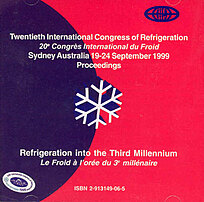
Document IIF
Utilisation des SQUID pour l'évaluation non destructive : développements récents.
Recent progress in the use of SQUIDS for non-destructive evaluation.
Auteurs : DONALDSON G. B., CARR C.
Résumé
The authors report on recent developments in the use of SQUID (Superconducting Quantum Interference Device) sensors for the magnetic detection of a variety of surface-breaking and deep-lying flaws in metals, including iron, steel, aluminium and titanium. The methods employed are first magnetometry, in which the defect is polarised by a magnetic field and the induced dipole moment detected by a SQUID, and secondly galvanometry in which the flaws distort the flow of eddy currents excited in the specimen and the SQUID measures the subsequent distortion of the magnetic field generated by these currents. These developments have allowed non-destructive evaluation to be extended to a number of problems of concern, including the detection of deep lying defects in engineering structures such as pipe lines and reactor vessels, and in aircraft structures and components.
Documents disponibles
Format PDF
Disponible
Prix public
20 €
Prix membre*
Gratuit
* meilleur tarif applicable selon le type d'adhésion (voir le détail des avantages des adhésions individuelles et collectives)
Détails
- Titre original : Recent progress in the use of SQUIDS for non-destructive evaluation.
- Identifiant de la fiche : 2000-1163
- Langues : Anglais
- Source : 20th International Congress of Refrigeration: Refrigeration into the Third Millennium.
- Date d'édition : 19/09/1999
Liens
Voir d'autres communications du même compte rendu (447)
Voir le compte rendu de la conférence
Indexation
-
Thèmes :
Cryogénie: sécurité, instrumentation et métrologie;
Autres applications des cryotempératures - Mots-clés : Métal; Mesure; Qualité; Squid; Procédé; Magnétisme; Détection
-
Remanent magnetization of instrument materials ...
- Auteurs : MESTER J. C., LOCKHART J. M.
- Date : 1996
- Langues : Anglais
- Source : Proceedings of the 21st international conference on low temperature physics.
Voir la fiche
-
SQUID et applications : état de l'art.
- Auteurs : DOLABDJIAN C.
- Date : 02/04/1997
- Langues : Français
- Source : Cinquièmes Journées de cryogénie et de supraconductivité. Recueil des conférences et posters.
Voir la fiche
-
What can SQUIDs tell about the human brain?
- Auteurs : KNUUTILA J.
- Date : 22/07/2002
- Langues : Anglais
- Source : Proceedings of the nineteenth International Cryogenic Engineering Conference. ICEC 19.
Voir la fiche
-
Applications en électronique des supraconducteurs.
- Auteurs : VILLEGIER J. C.
- Date : 02/04/1997
- Langues : Français
- Source : Cinquièmes Journées de cryogénie et de supraconductivité. Recueil des conférences et posters.
Voir la fiche
-
The transfer of superfluid helium in space.
- Auteurs : DIPIRRO M. J., SHIRRON P. J., TUTTLE J. G.
- Date : 07/06/1994
- Langues : Anglais
- Source : Proceedings of the 15th international cryogenic engineering conference. ICEC 15.
Voir la fiche
